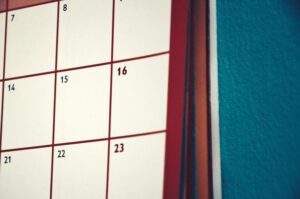Beginner Guide to Bullet Journaling for Organized Living

Bullet journaling has become a popular method for organizing daily life, tracking goals, and boosting creativity. If you’re new to this versatile system, don’t worry—this beginner guide will walk you through everything you need to know to start your own bullet journal with confidence.
What Is Bullet Journaling?
At its core, bullet journaling is a flexible and customizable way to keep track of tasks, notes, events, and ideas in a single notebook. Created by Ryder Carroll, the bullet journal combines to-do lists, calendars, diaries, and planners into one simple system.
Unlike traditional planners or digital apps, a bullet journal lets you design your own layouts and add personal touches. You decide what to track and how to organize it, making it ideal for anyone seeking more control over their productivity and creativity.
What You’ll Need to Start
Basic Supplies
– Notebook: Choose a notebook you like—dot grid notebooks are popular because the dots help with layout but don’t distract.
– Pen: Use a pen you enjoy writing with; many people prefer fine-liner pens for neatness.
– Ruler (optional): Helpful for creating clean lines and boxes.
Optional Extras
– Colored pens or markers
– Stickers or washi tape for decoration
– Stencils for shapes and icons
Setting Up Your Bullet Journal
1. Index
The index is your journal’s table of contents. Leave the first few pages blank for this section. As you add pages, record the topics and page numbers here so you can find them easily later.
2. Key
Create a key to explain your symbols or “bullets.” Common bullets include:
– Task: •
– Completed task: X
– Migrated task (moved to another day): >
– Event: O
– Note: –
Feel free to personalize your own symbols to make them intuitive for you.
3. Future Log
This is an overview of the upcoming months or year. Divide a page into sections for each month and jot down important events, appointments, or deadlines. It helps you plan ahead without cluttering daily pages.
4. Monthly Log
At the start of each month, create a calendar or list view of the days, and write monthly goals or priorities. This section bridges your future overview with daily tasks.
5. Daily Logs
These are the heart of the bullet journal. Use daily logs for tasks, events, and notes specific to each day. Write the date at the top, then list whatever you need to capture for that day, marking them with your bullets.
Tips for Effective Bullet Journaling
Keep It Simple
When starting out, focus on basic elements like the index, monthly log, and daily logs. You can always add more complex trackers or collections once you get comfortable.
Make It Your Own
One of the joys of bullet journaling is customization. Some people add habit trackers, mood logs, meal plans, or gratitude lists. Try different layouts and see what fits your lifestyle.
Review Regularly
At the end of each day or week, review unfinished tasks. Decide whether to migrate them forward, delete if no longer relevant, or delegate if possible. This keeps your journal up-to-date and efficient.
Use Collections
Collections are themed pages where you gather related information—books to read, project plans, shopping lists, or workout logs. Add them wherever you have space in your notebook, and list their page numbers in the index.
Common Mistakes to Avoid
– Overcomplicating layouts: Aim for clarity over decoration, especially when you’re just starting.
– Trying to plan too far ahead: Daily logs are meant to be flexible; don’t overwhelm yourself with rigid schedules.
– Neglecting the index: Without good indexing, it’s hard to retrieve information quickly.
– Focusing too much on perfection: Bullet journaling is a tool, not an art contest. Let it evolve naturally.
Final Thoughts
Bullet journaling is a creative and adaptable way to improve organization and mindfulness. Starting small and building routines gradually will help you find the method that works best for you. Remember, the most important part is making your bullet journal work for your life—not the other way around.
Grab a notebook and pen, and begin your bullet journaling journey today! You might be surprised how much more focused and productive you feel with this simple practice.
Happy journaling!




